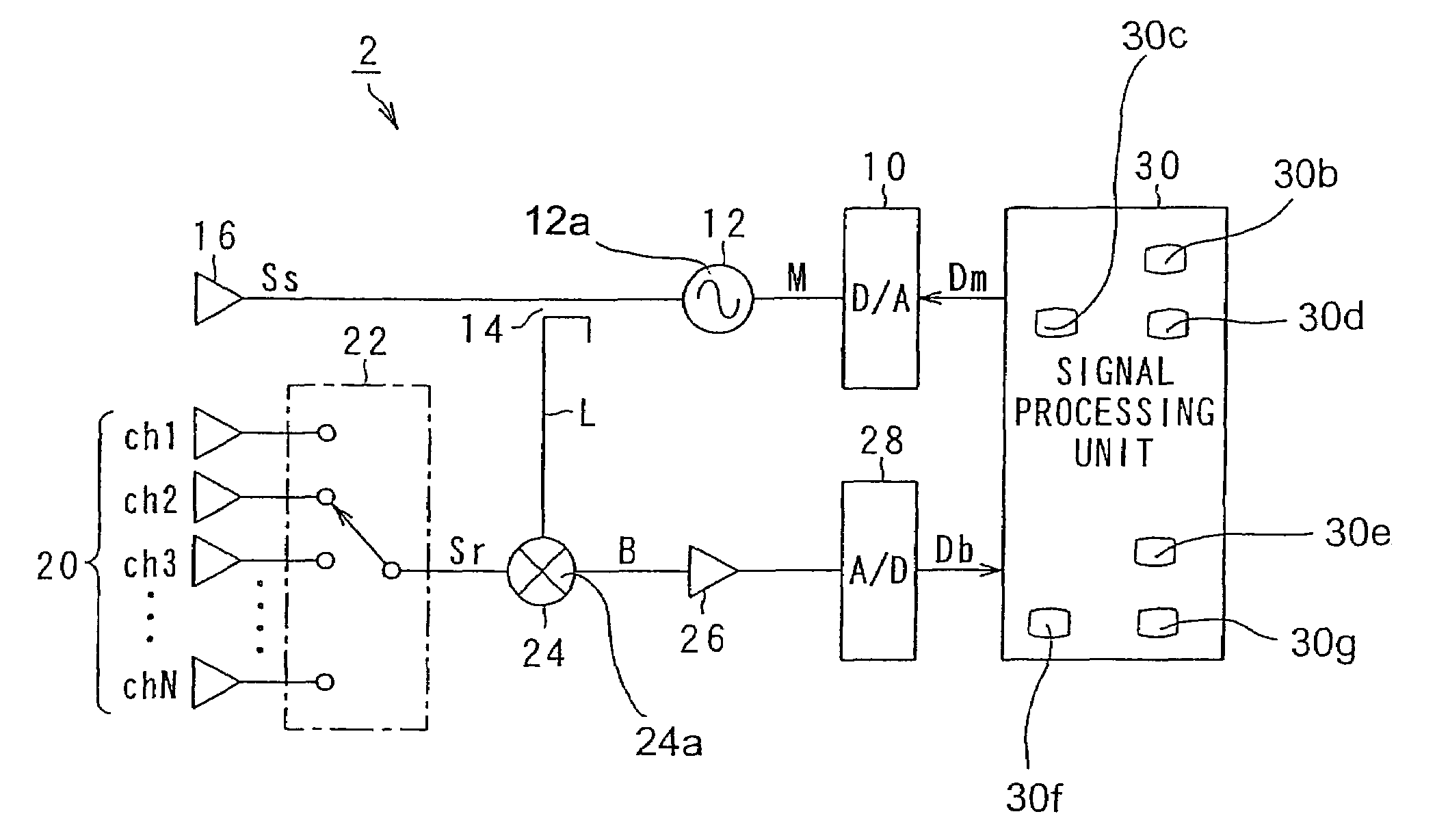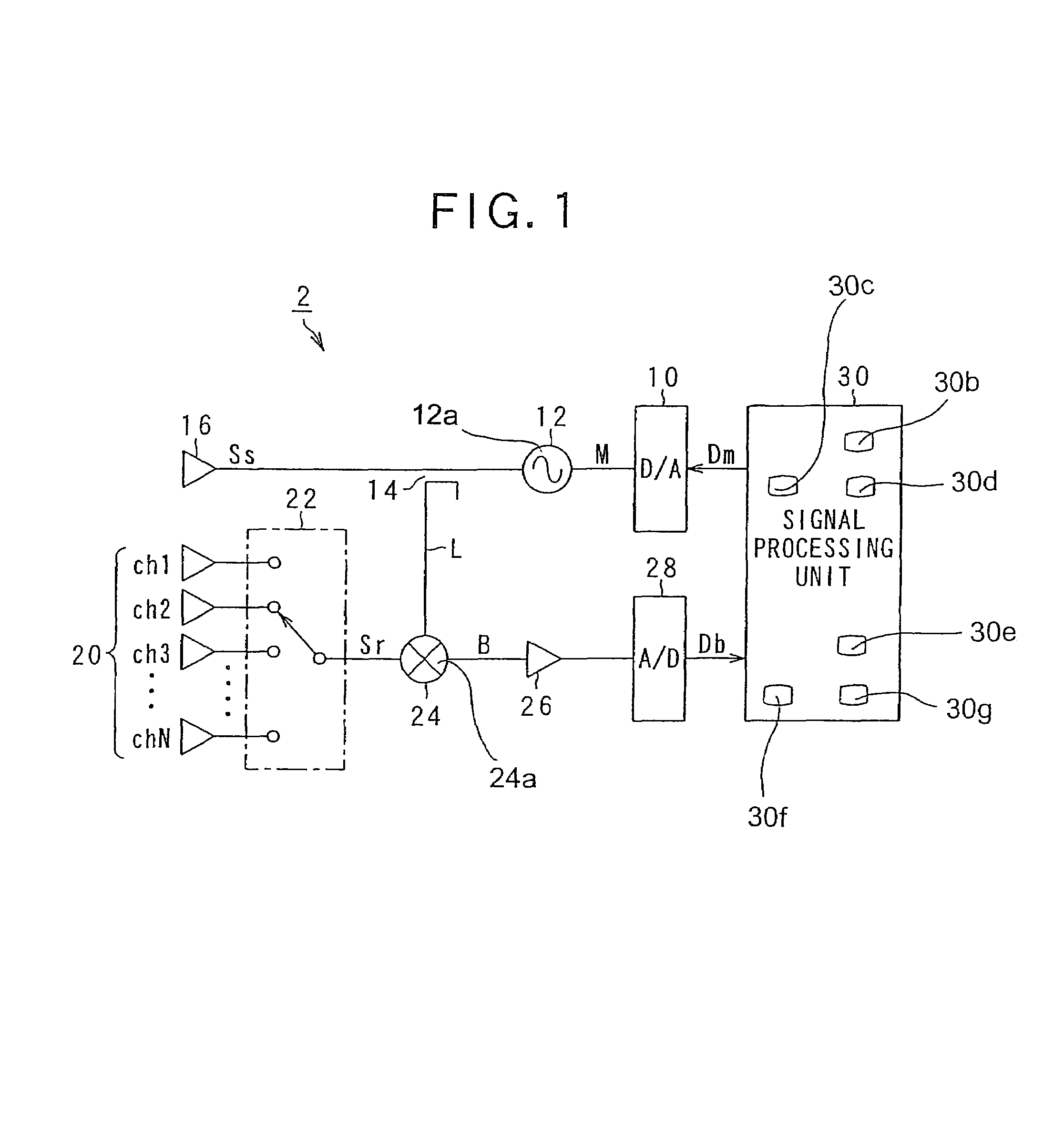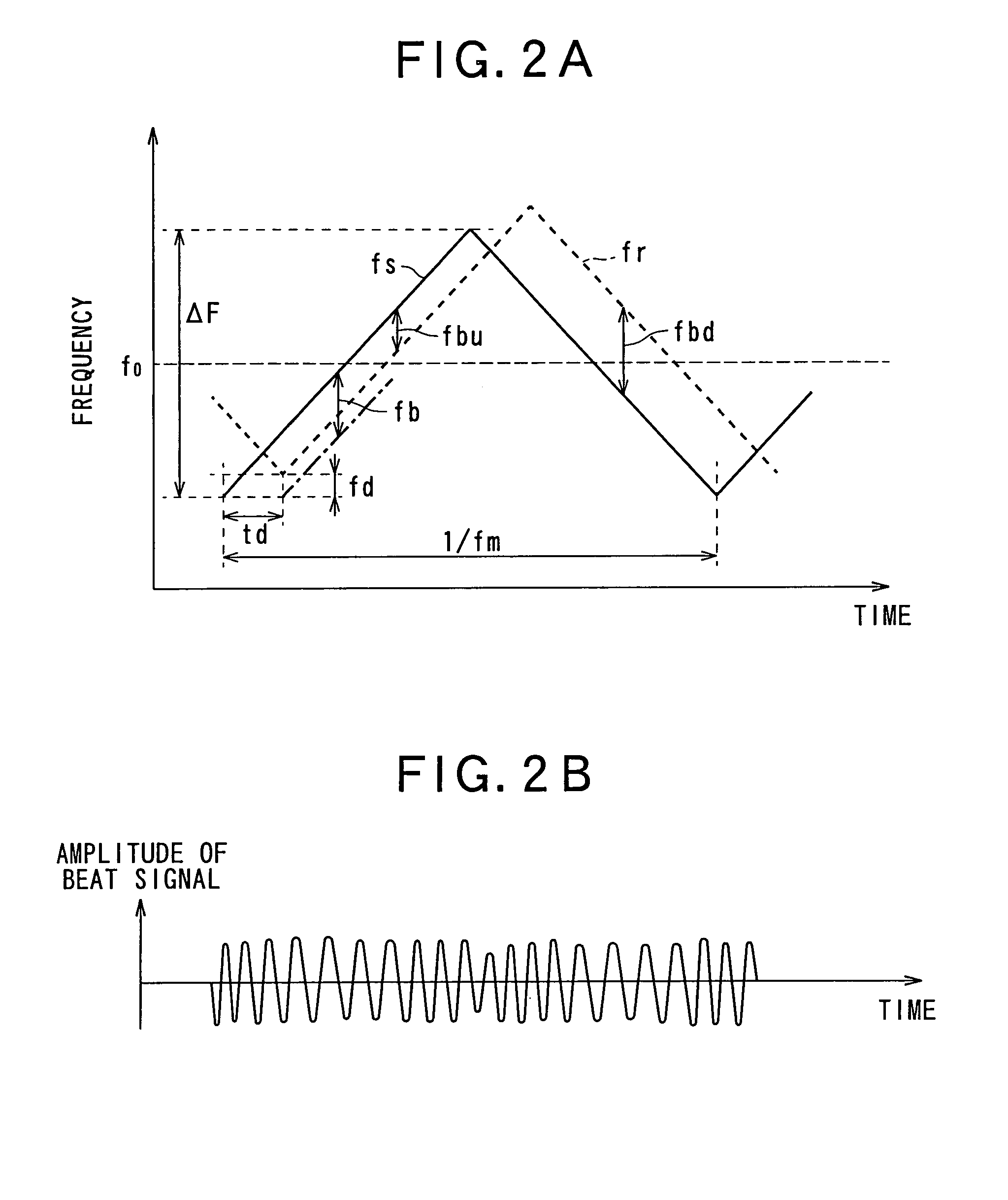Method for determining noise floor level and radar using the same
a technology of noise floor and radar, applied in the direction of noise figure or signal-to-noise ratio measurement, measurement device, instruments, etc., can solve the problems of interference between the fmcw radar with which the subject vehicle is equipped and the other radar installed in the other vehicle, and the range measurement obtained from a two-frequency cw radar in the presence of multiple target objects is unreliable, so as to achieve accurate detection of the noise floor level of the frequency spectrum characteristic
- Summary
- Abstract
- Description
- Claims
- Application Information
AI Technical Summary
Benefits of technology
Problems solved by technology
Method used
Image
Examples
Embodiment Construction
[0056]Preferred embodiments of the present invention will be explained below with reference to attached drawings. Identical constituents are denoted by the same reference numerals throughout the drawings.
[0057]FIG. 1 is a block diagram showing a vehicle-mounted FMCW radar according to the present invention. The FMCW radar detects the distance to a target object located in a measuring range and / or a relative speed of the target object such as a preceding vehicle.
[0058]As shown in FIG. 1, the FMCW radar 2 includes a digital-analog (D / A) converter 10, an oscillator 12 including a transmission signal generator 12a, a splitter 14, a transmitting antenna 16, and a signal processing unit 30. The signal processing unit 30 includes a frequency analyzer 30b, a histogram calculator 30c, a noise floor level detector 30d, a peak frequency detector 30e, a target object characteristic calculator 30f and an interference detector 30g.
[0059]The D / A converter 10 receives digital data Dm from the sign...
PUM
 Login to View More
Login to View More Abstract
Description
Claims
Application Information
 Login to View More
Login to View More - R&D
- Intellectual Property
- Life Sciences
- Materials
- Tech Scout
- Unparalleled Data Quality
- Higher Quality Content
- 60% Fewer Hallucinations
Browse by: Latest US Patents, China's latest patents, Technical Efficacy Thesaurus, Application Domain, Technology Topic, Popular Technical Reports.
© 2025 PatSnap. All rights reserved.Legal|Privacy policy|Modern Slavery Act Transparency Statement|Sitemap|About US| Contact US: help@patsnap.com



